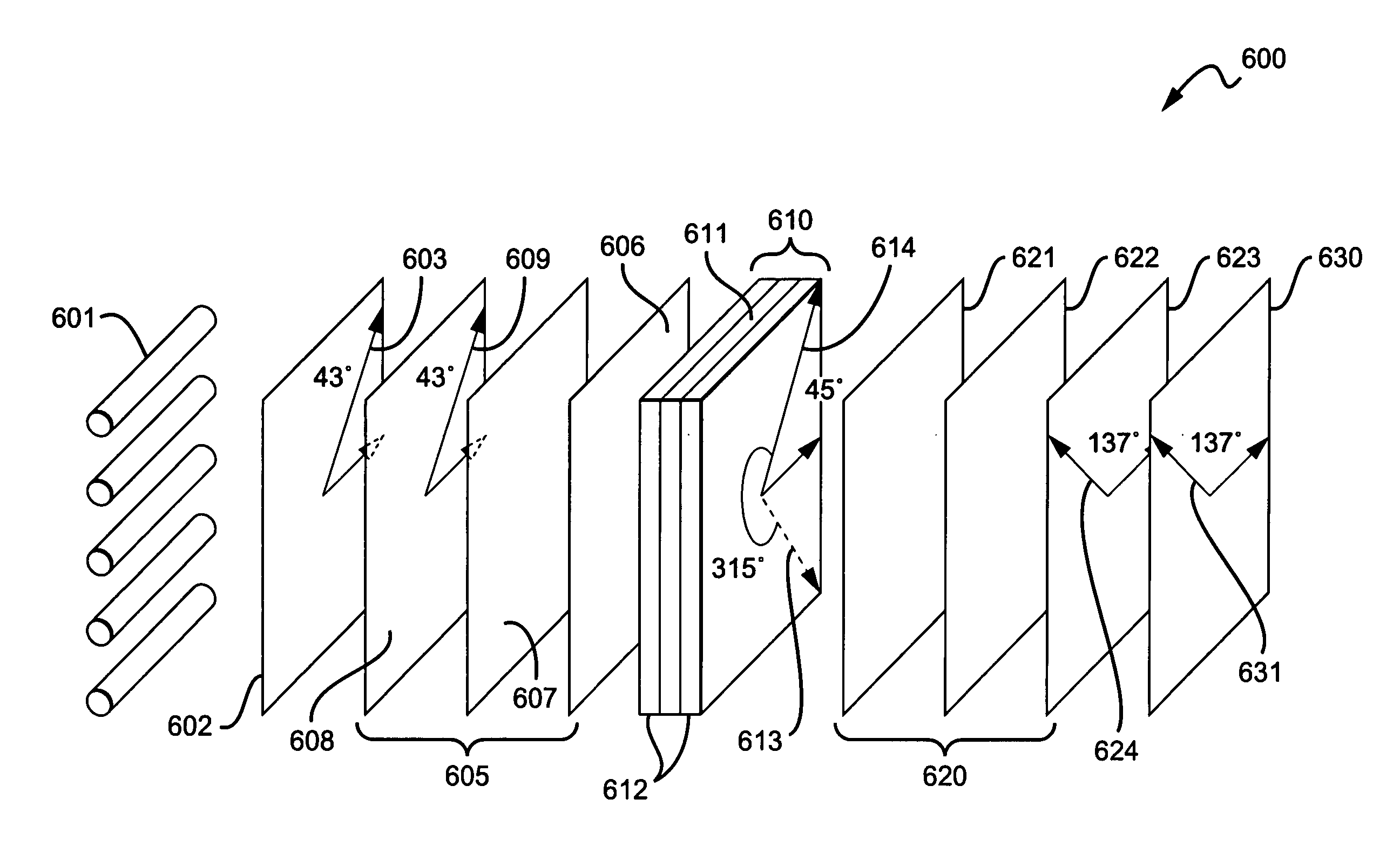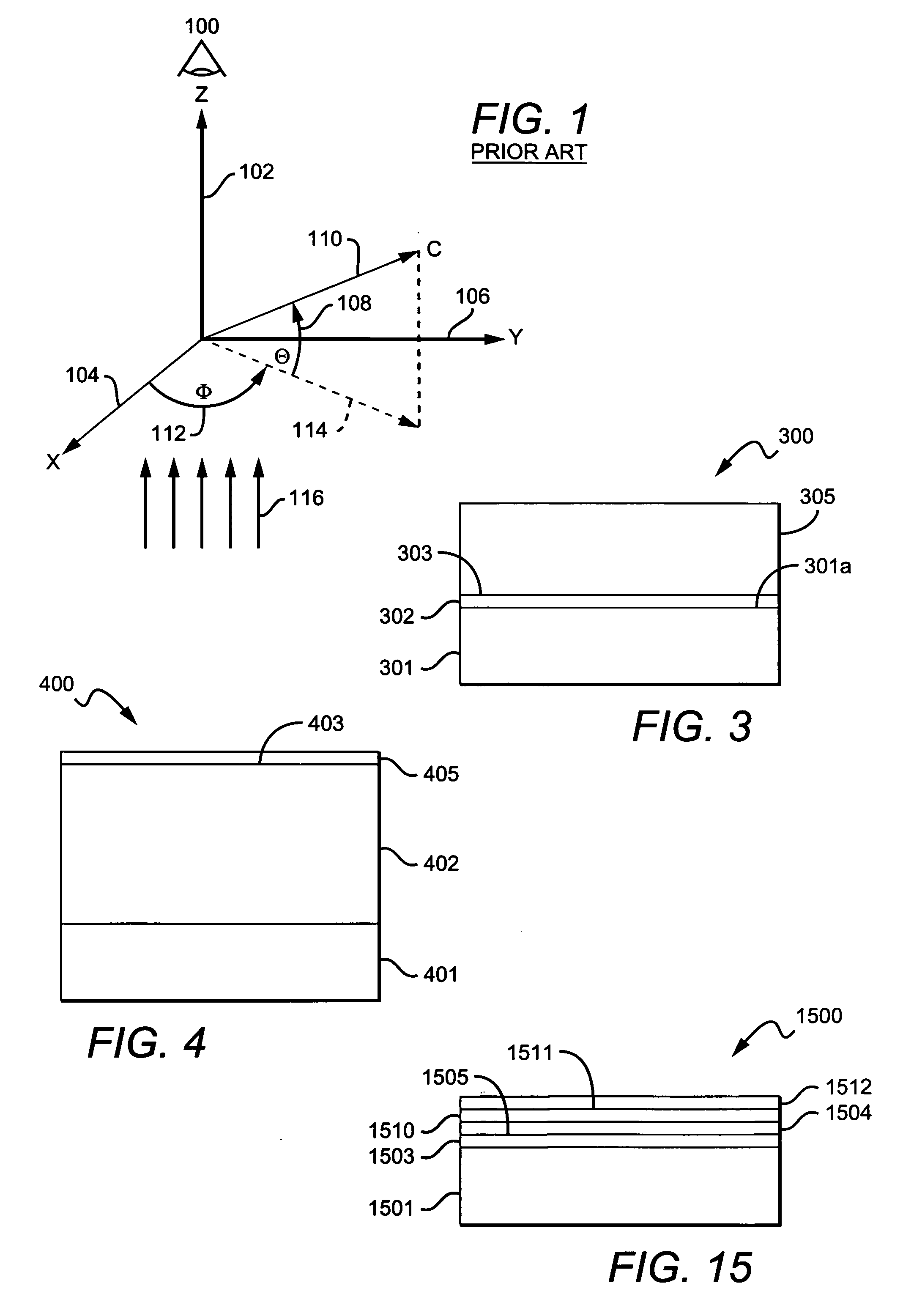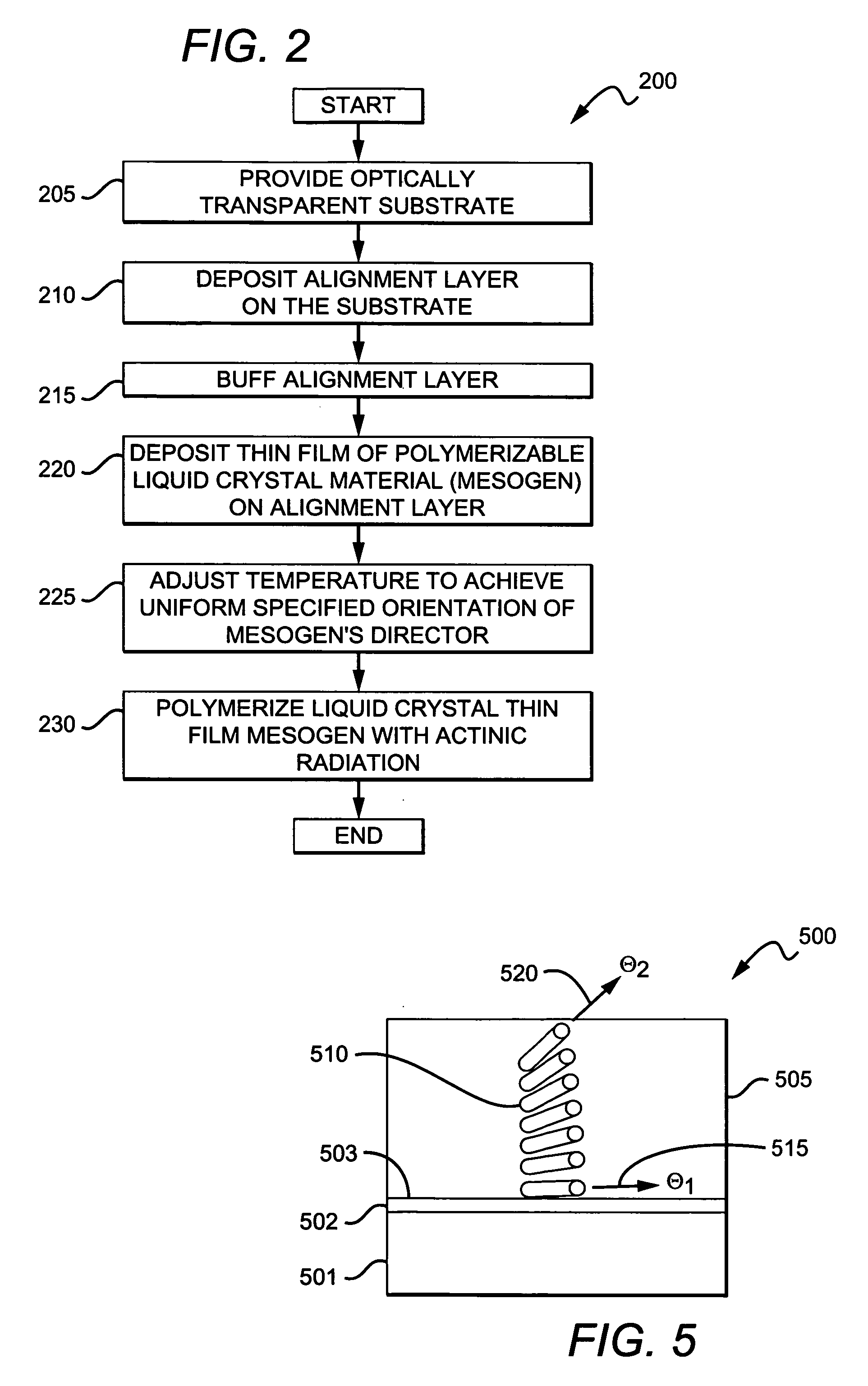UV curable alignment material for fabrication of monolithic compensators for liquid crystal displays
a monolithic compensator and alignment material technology, applied in the field of liquid crystal display, can solve the problems of high cost of thick optical quality tac substrates, inability to provide alignment for liquid crystal molecules by itself, etc., and achieve the effect of improving the viewing angle properties of lcds and substantial cost savings
- Summary
- Abstract
- Description
- Claims
- Application Information
AI Technical Summary
Benefits of technology
Problems solved by technology
Method used
Image
Examples
Embodiment Construction
[0039] The alignment layer forming part of the present invention may have applications as both an alignment layer and an optical compensator for liquid crystal displays. It preferably comprises a segmented, rigid-rod aromatic polyimide mixed with a UV curable acrylate photopolymer. This alignment layer, when rubbed on a first surface of the film, is capable of aligning nematic liquid crystal molecules in a film on the alignment layer with pretilt. The alignment layer can be used to fabricate films of aligned polymerized liquid crystals, such as A-plates, O-plates, splay O-plates, twist / splay O-plates, A-plates, and cholesteric films for use in liquid crystal displays and other electrooptic devices. The aromatic polyimide-based UV curable acrylate film has applications as both an alignment layer and, when thicker than about 0.5 μm, functioning as a negative uniaxial birefringent C-plate component of an optical compensator for liquid crystal displays. Thinner films may also be used as...
PUM
 Login to View More
Login to View More Abstract
Description
Claims
Application Information
 Login to View More
Login to View More - R&D
- Intellectual Property
- Life Sciences
- Materials
- Tech Scout
- Unparalleled Data Quality
- Higher Quality Content
- 60% Fewer Hallucinations
Browse by: Latest US Patents, China's latest patents, Technical Efficacy Thesaurus, Application Domain, Technology Topic, Popular Technical Reports.
© 2025 PatSnap. All rights reserved.Legal|Privacy policy|Modern Slavery Act Transparency Statement|Sitemap|About US| Contact US: help@patsnap.com



